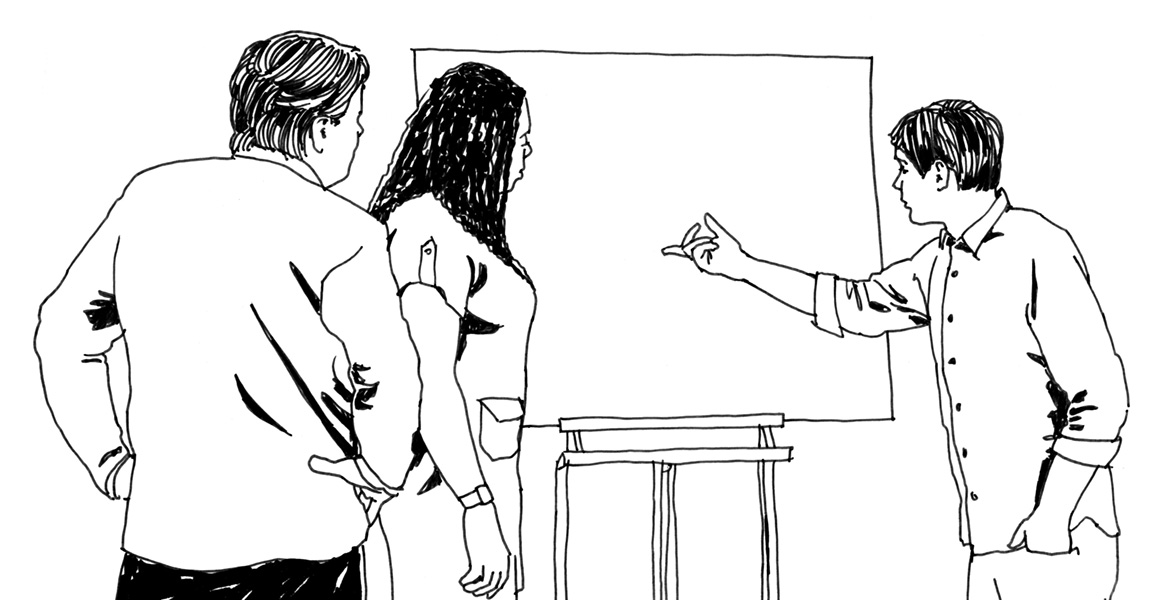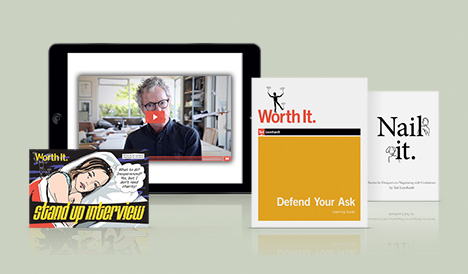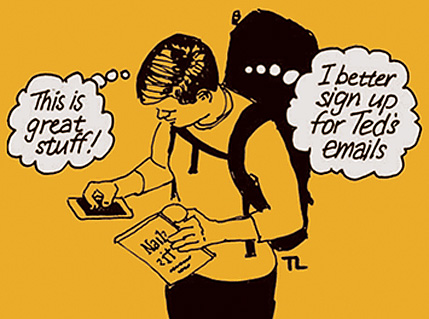To Get the Contract You Need to Disrupt

Requests for proposals (RFPs) are the worst. Still, they’re the way many businesses and independent workers alike score valuable contract work — particularly for creative services.
Even though everything from corporations to government agencies and nonprofits all issue RFPs, I can’t help but hate what they do to those of us who respond to them: They standardize us, or at least try to. For creative workers, there’s a bitter irony in that; meaningful, high-quality, world-changing creativity is unique by definition, and the standard RFP usually asks for the opposite.
Here’s how I’ve learned to bid for those projects successfully.
1. Change the Rules in Your Favor
The standard RFP usually says something like, “Be sure your response is in exact accordance with the requirements.” That’s exactly what you shouldn’t do.
First, a confession: I built a sizable design firm and worked on multimillion-dollar global assignments, so I’ve seen my share of RFPs. And while I’ve hated virtually all them, when I did decide to pursue one, I certainly didn’t hate the work they brought in.
My personal rule is to only complete an RFP if at least one of these three conditions applies:
- You have an inside track: You either helped the potential client write it, or you have an advocate inside the organization who’ll support you.
- Your expertise makes you the only logical choice.
- You have absolutely nothing better to do and need the money.
That sets a high bar for plenty of creative agencies and freelancers — and that’s the point. Before you even consider bidding for the project, you need to know it’ll be on your terms. In order to test whether at least one of those conditions applies to you, do a quick check. Ask yourself:
- Do I know these people or the company?
- Is the project interesting?
- Does it fit my expertise?
If you can’t answer “yes” to any of those questions and aren’t desperate for the income, walk away. But if you can, then settle in and read the RFP closely, jotting down questions — questions you’ll ask them before putting in any effort beyond reading.
2. Set a Meeting
Yes, a meeting. This may take your prospective client off-guard, but remember: You’re changing the rules in your favor before you even bid for the work. The goal here is to turn the context from a cookie-cutter RFP into a collaborative working relationship on a project that uniquely fits your talents.
Is this possible? Yes. Will you lose some opportunities with this approach? Yes.
Some prospects will be turned off. But you have to know whether they’re worth your time. So send an email asking for a quick meeting. In person is best; teleconference is second-best; phone is okay but not great. If they won’t meet or talk, then at least in my experience, chances are you won’t get the gig.
3. Ask the Right Questions
If your prospective client agrees to meet, ask these questions:
- Why us?
- Who else received the RFP?
- How many were issued?
(If the RFP was sent to just a few others whom you recognize as worthy competitors, then in my experience, it’s probably worth pursuing.)
The most important question is, “Why us?”
What you want to hear is, “You were recommended by _______.” Or, “We love what you did for _______.” That tells you they value your expertise and see you as a real candidate for this opportunity. If they say, “You’re on a supplier list,” or “We Googled and your name came up,” you’ll know your chance of getting the gig is low.
Use the conversation to explore what they want to accomplish and why. You want your questions to demonstrate your knowledge and expertise.
My favorite question is a version of, “Why this project at this time?” This can give you a sense of their urgency and priorities. The closer the deadline and the more important the project, the better your chance of winning simply because they’ll have less time to compare bidders.
Also make sure you ask them how they see your expertise helping them.
At any point, you should feel free at any time to say, “I’m not sure this is a good fit. But before I say no, I’d like to ask a few more questions.” This is important because now you’re measuring them to see if they’re a fit. And if you’re going to move forward with submitting a response to the RFP, you want your contact to remember you as a professional with high standards.
4. Ask for Something
Notice that up until this point, you still haven’t bid for the work in writing — you’re still checking out the opportunity. And you’re seeing if you can get them to disrupt their RFP process for you. Because, from my experience, you must be an insider, or preferred supplier in some form, in order to win work that’s really worth taking on.
Now you ask for a paid, in-person planning session: “In my experience, projects like yours benefit immensely from a mutual exploration of the possibilities. It will take half a day of your time and an investment of $1,500 of my time.”
When they resist the fee — and many do — I’ve often successfully explained that I need my professional time compensated.
If they come around, congratulations — you’ve changed the context. If you don’t get this gig even after the half-day of paid planning, you’ve at least established yourself as a professional and made important contacts in the organization (and gotten paid for it).
If they won’t do the planning session, it’s time to walk — for now. That’s as simple as saying, “Thanks for including us in your thinking, but I’m afraid I don’t see a fit. If you don’t find what you’re looking for, I’m always open to another conversation.” Walking never feels great at first, but it’s never a wrong move to set the bar high. I’ve had more than a few clients come back to me after this scenario.
5. Go Ahead and Bid
By changing the context, agreeing to a planning session, and structuring the project according to both your needs, you’ll be able to demonstrate your expertise in a cooperative environment — one that draws insights and experiences from both sides in a spirit of mutuality. That’s something that the standard RFP process is structured to avoid.
Now you can move forward with responding to the RFP knowing it’s a project you want, and one you have a very good chance of winning. After all, now you’re the professional with an insider connection and real control.
Originally published at Fast Company.



